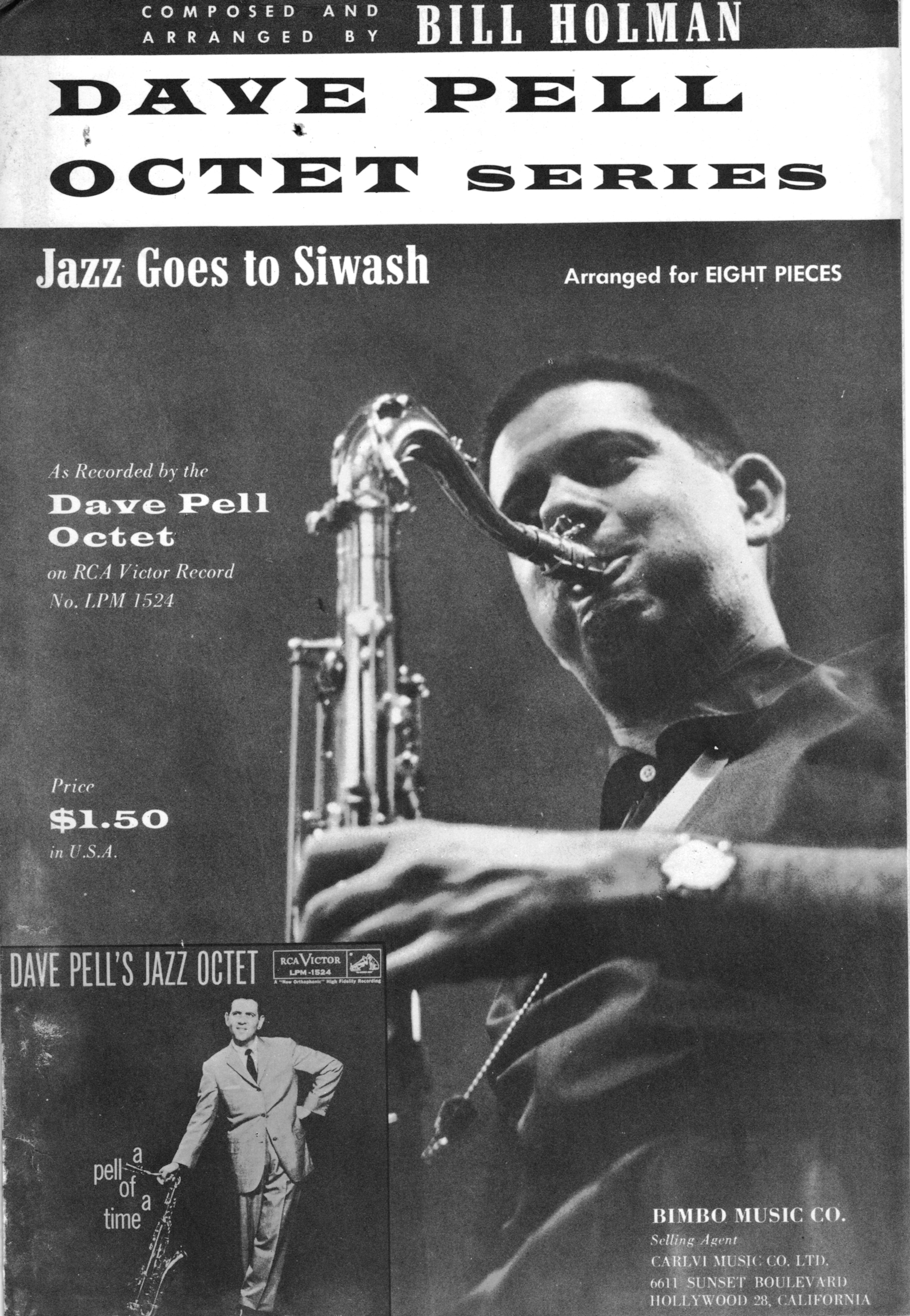Jazz Goes to Siwash part 2

If you have listened to the two versions you will realise the Dave Pell octet version is much more involved and exhibits some of the stylistic elements Bill Holman is known for. Probably the most significant of these is contrapuntal writing as he weaves several lines together in this arrangement, another is thematic development which he very clearly uses here.
The Mel Lewis version is really a head arrangement i.e. a simple statement of the tune which is an AABA format 32 bar form. Marty Paich plays the chord sequence of A by way of an intro but from there on it is just a solo vehicle for Holman, Sheldon & Paich. Bill Holman plays a bouncy solo but Jack Sheldon has the edge for me executing a smooth and accurate couple of choruses outlining the changes and I think it might be the most fluent solo I've heard from Marty Paich, Paich plays longer lines than on other records although he does employ his gambit of throwing the time off by playing chordal solo patterns that cross the bar lines. The head out has no bridge melody played as Mel Lewis Takes an 8 bar break leading back to the tune which has a crisp un embellished end no tag no held chord or Jazz Noodling just a hard stop.
The Dave Pell Octet version is a whole different ball game! Here is a bullet point list
Written intro 16 bars with Drum breaks derived from the A material
Tune on Tenor and Trumpet (A)
Tune on Tenor and Tpt with counter melody on Guitar,Trombone and Baritone (A2)
Bridge tune in the same fashion
A3 is A2 repeated but with a Tag rising in minor 3rds to a full band rhythmic unison
Tenor solo with backing on A2 & A3
Trombone solo with Backing on B
A full band Send off leading to Baritone solo on ABA
Trumpet solo for 1 chorus (no backing)
Soli on AA Guitar Solo on BA with backings
Ensemble on AA featuring the counter melody
Shout Chorus on AA all horns in rhythmic unison
B as at top
A3 as before with rising tag
Coda 2 bar drum break then full band similar to intro figure and held last chord.
The Key and tempo of both versions are the same ; Fmajor and 240 BPM. The chord sequence is not stolen from any standard, as far as I can tell, although similar to many which gives it a familiarity. The Dave Pell version is a real Mini Big band arrangement although it avoids the key change that many a full big band chart has. All the horns ( and the guitar is a quasi horn in this ensemble) get a solo where as the Mel Lewis version is a simple Quintet version of the tune with little or no harmony in the tune or backings behind solos.
For me both are pleasing in there own way. The plain vanilla version does point up how a tune can be expanded into a larger context.

